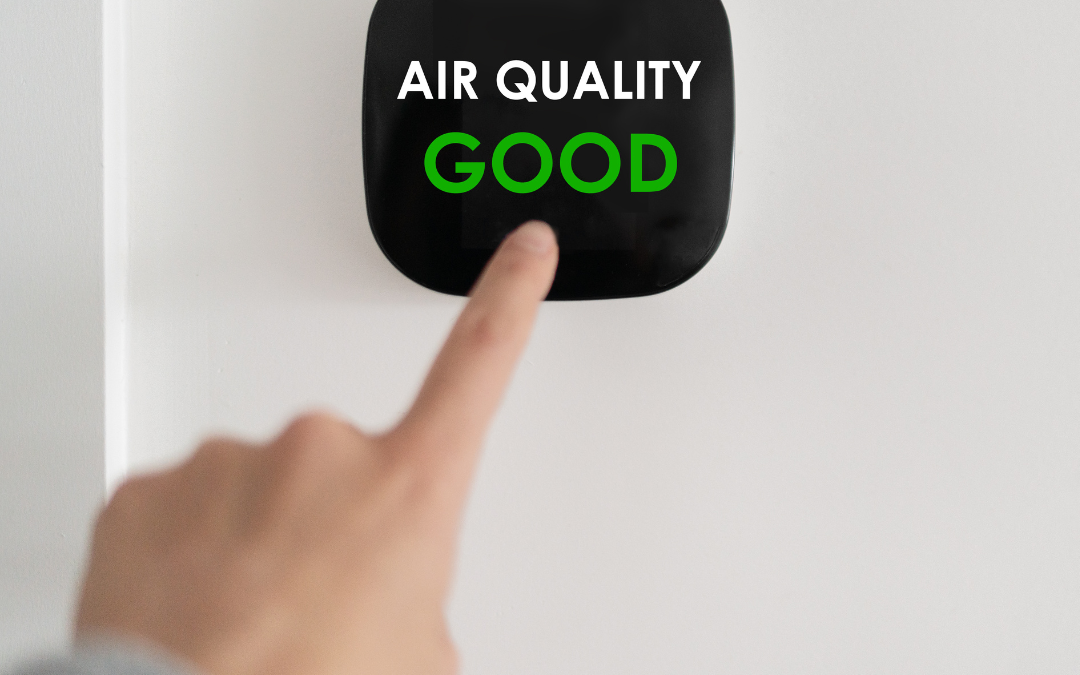At Premier Allergy, Asthma, & Sinus Care, we’ve witnessed firsthand the profound impact that air quality can have on individuals living with asthma. Asthma, a chronic respiratory condition characterized by inflammation and narrowing of the airways, can be exacerbated by various environmental factors, including air pollution, allergens, and irritants. In this comprehensive guide, we’ll explore the intricate relationship between air quality and asthma, highlighting key factors, effects, and strategies for managing asthma symptoms in the face of poor air quality.
The Link Between Air Quality and Asthma:
Air quality refers to the cleanliness and purity of the air we breathe, which can be influenced by a variety of factors, including pollution, pollen, dust, and other airborne particles. Poor air quality can exacerbate asthma symptoms and trigger asthma attacks by irritating the airways and increasing inflammation. Common pollutants and allergens that can adversely affect individuals with asthma include:
-
Particulate Matter (PM2.5 and PM10): Fine particles suspended in the air, such as dust, pollen, and vehicle exhaust, can penetrate deep into the lungs and trigger inflammation in individuals with asthma.
-
Ozone (O3): Ground-level ozone, a component of smog formed by the reaction of sunlight with pollutants emitted by cars, factories, and other sources, can exacerbate asthma symptoms and decrease lung function.
-
Nitrogen Dioxide (NO2): A common air pollutant produced by combustion processes, such as vehicle emissions and industrial activities, nitrogen dioxide can irritate the airways and worsen asthma symptoms.
-
Sulfur Dioxide (SO2): Another byproduct of industrial processes and fossil fuel combustion, sulfur dioxide can irritate the respiratory system and trigger asthma attacks, particularly in individuals with pre-existing respiratory conditions.
Effects of Poor Air Quality on Asthma:
Exposure to poor air quality can have several adverse effects on individuals with asthma, including:
-
Increased Asthma Symptoms: Poor air quality can exacerbate asthma symptoms such as coughing, wheezing, chest tightness, and shortness of breath.
-
Asthma Attacks: High levels of air pollution and allergens can trigger asthma attacks, characterized by sudden worsening of symptoms and difficulty breathing.
-
Decreased Lung Function: Prolonged exposure to air pollution and irritants can lead to decreased lung function and exacerbate existing respiratory conditions, including asthma.
-
Hospitalizations and Emergency Room Visits: Poor air quality has been linked to an increase in asthma-related hospitalizations and emergency room visits, particularly during periods of high pollution or allergen exposure.
Strategies for Managing Asthma in Poor Air Quality:
While it may be challenging to completely avoid exposure to poor air quality, especially in urban areas or during certain times of the year, there are several strategies individuals with asthma can implement to reduce the risk of exacerbations:
-
Monitor Air Quality: Stay informed about local air quality conditions by checking air quality indexes and forecasts regularly. Limit outdoor activities during days when air pollution levels are high, especially if you have asthma or other respiratory conditions.
-
Use Air Purifiers: Consider using high-efficiency particulate air (HEPA) filters or air purifiers in your home to remove allergens, pollutants, and other airborne particles from the indoor air. Keep windows closed during periods of poor air quality to prevent outdoor pollutants from entering your home.
-
Avoid Triggers: Identify and avoid asthma triggers, such as cigarette smoke, strong odors, and airborne allergens like pollen and pet dander. Use an allergen-proof mattress and pillow covers to reduce exposure to dust mites, and consider removing carpets and upholstered furniture from your home, as they can harbor allergens.
-
Take Medications as Prescribed: Continue taking your asthma medications as prescribed by your allergy provider, even during periods of poor air quality. Controller medications, such as inhaled corticosteroids and long-acting bronchodilators, can help reduce inflammation and keep asthma symptoms under control.
-
Create an Asthma Action Plan: Work with your allergy provider to develop an asthma action plan that outlines steps to take in the event of worsening symptoms or an asthma attack. Make sure family members, caregivers, and school or work personnel are familiar with the plan and know how to respond in an emergency.
Ways to improve air quality in the home:
Use High-Efficiency Air Filters: Install high-efficiency particulate air (HEPA) filters in your HVAC system to capture airborne particles such as dust, pollen, pet dander, and mold spores. Be sure to regularly replace air filters.
Ventilate Your Home: Proper ventilation is crucial for reducing indoor air pollutants and replenishing indoor air with fresh outdoor air. Open windows and doors when weather permits to promote natural airflow, and use exhaust fans in kitchens and bathrooms to remove moisture and odors.
Control Humidity Levels: Maintain optimal indoor humidity levels (between 30% and 50%) to prevent mold growth and minimize the proliferation of dust mites. Use dehumidifiers in damp areas such as basements and bathrooms, and consider using a humidifier during dry winter months to prevent respiratory irritation.
Clean Regularly: Regular cleaning helps remove dust, pet dander, and other allergens from surfaces and air. Vacuum carpets, rugs, and upholstery using a vacuum cleaner equipped with a HEPA filter, and mop hard floors regularly to capture allergens and prevent them from becoming airborne.
Reduce Indoor Pollutants: Minimize indoor air pollutants by avoiding smoking indoors, using natural cleaning products free of harsh chemicals, and limiting the use of scented candles, air fresheners, and other fragranced products that can emit volatile organic compounds (VOCs).
Control Allergens: Take steps to reduce indoor allergens such as dust mites, mold, and pet dander. Wash bedding, curtains, and other fabrics in hot water regularly, and use allergen-proof covers on mattresses and pillows. Keep pets out of bedrooms and vacuum pet hair and dander frequently.
Eliminate Mold: Address moisture issues promptly to prevent mold growth. Repair leaks, use exhaust fans in moisture-prone areas, and clean and disinfect moldy surfaces using a solution of water and detergent or a commercial mold remover.
Avoid Harsh Chemicals: Choose low-VOC or VOC-free paints, adhesives, and household cleaners to minimize indoor air pollution. Look for products labeled as environmentally friendly or certified by third-party organizations such as GREENGUARD or EcoLogo.
Bring in Plants: Certain houseplants can help improve indoor air quality by absorbing harmful pollutants and releasing oxygen. Consider incorporating air-purifying plants such as spider plants, peace lilies, snake plants, and pothos into your home decor.
Test for Radon: Radon is a naturally occurring radioactive gas that can seep into homes through cracks in the foundation and pose serious health risks, including lung cancer. Test your home for radon using a radon test kit, and take steps to mitigate elevated radon levels if necessary.
At Premier Allergy, Asthma, & Sinus Care, we emphasize the importance of understanding how air quality can affect asthma and taking proactive steps to minimize exposure to pollutants and allergens. By staying informed, avoiding triggers, and following a comprehensive asthma management plan, individuals with asthma can reduce the risk of exacerbations and enjoy improved respiratory health, even in the face of poor air quality. If you have asthma or other respiratory conditions, consult with your allergy provider for personalized guidance and recommendations tailored to your specific needs.
Please feel free to make an appointment with us today. We are here for you. Together, we can breathe easier and live healthier lives, regardless of environmental challenges.




